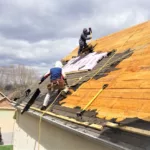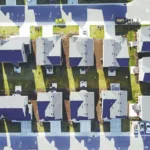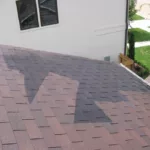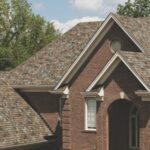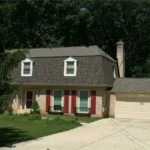In the DMV and NJ region, we know the ins and outs of summer storms. A strong storm is always accompanied by high winds, which pose a threat to your home’s exterior. Whether it is wind that’s strong enough to have damaged the integrity of your shingles, or wind that has knocked down branches and debris, we talk about the clear signs of wind damage to look for after a summer storm.
Breaking Down Wind Speeds
The National Weather Service provides a chart that estimates wind speeds through visual damage. If you check your weather app, you could know the mph of the wind and associate it with the potential damage it can cause:
19 to 24 mph: Large branches and small trees in leaf begin to sway.
25 to 31 mph: Large branches in continuous motion. Whistling sounds heard in overhead or nearby power and telephone lines. Umbrellas used with difficulty.
32 to 38 mph: Whole trees in motion. Inconvenience felt when walking against the wind.
39 to 46 mph: Wind breaks twigs and small branches. Wind generally impedes walking.
47 to 54 mph: Structural damage occurs, such as chimney covers, roofing tiles blown off, and television antennas damaged. Ground is littered with many small twigs and broken branches.
55 to 63 mph: Considerable structural damage occurs, especially on roofs. Small trees may be blown over and uprooted.
64 to 75 mph: Widespread damage occurs. Larger trees blown over and uprooted.
Clear Signs of Wind Damage
Shingle Damage
Shingle damage is easily seen during a routine roof inspection or even sometimes it is noticeable from the ground. If you are missing any shingles, you have clear roof damage. Wind often causes damage to the edges of your roof or worsens areas of your roof where shingles may have already been loose. Once shingles start blowing off, it causes a chain reaction and can lead to major repairs or a replacement.
Granule Loss
Connected with shingle damage is granule loss. The material on your shingles will wear over time and you may notice very minor granule loss, which is completely normal. If you start to notice bare spots or cracks that you haven’t noticed before, these are signs that the seal on your shingle has broke and it will start to flap. The flapping is a huge warning sign because all it takes is an unexpected storm with winds just strong enough to have it tear off. The good news is that this type of damage isn’t always major. Sometimes it’s localized, and you’re only facing a minor repair.
Debris
Another thing to consider is debris. As stated above, around 30-40 mph cause small branches to break off. If there are lot of branches and other forms of debris laying around your property or on your roof after a storm, we would recommend either performing a roof inspection (if it is safe to do so) or hiring a roofing professional, such as one of MLM’s project consultants, to come out and take a look.
Water Leaks
If the wind compromises the integrity of your shingles during a storm, you will find the effects of the storm on your ceiling and walls. If you notice discoloration (yellow/brown color) or the smell of mold, chances are there is moisture that has leaked through. While you may think it is just a minor leak and that it is harmless, when another storm rolls through it could worsen the issue tenfold. The best thing to do in this case is call a roofing professional to inspect the issue and give you options on what to do next.
It’s never fun finding damage after a storm, but let MLM help! Our trained professionals can help guide you from start to finish of the roof replacement process. Starting with a free inspection and consultation, we communicate all your options and help navigate this intimidating process. Give us a call at 844-MLM-ROOF or fill out the form on our website to schedule your inspection!


